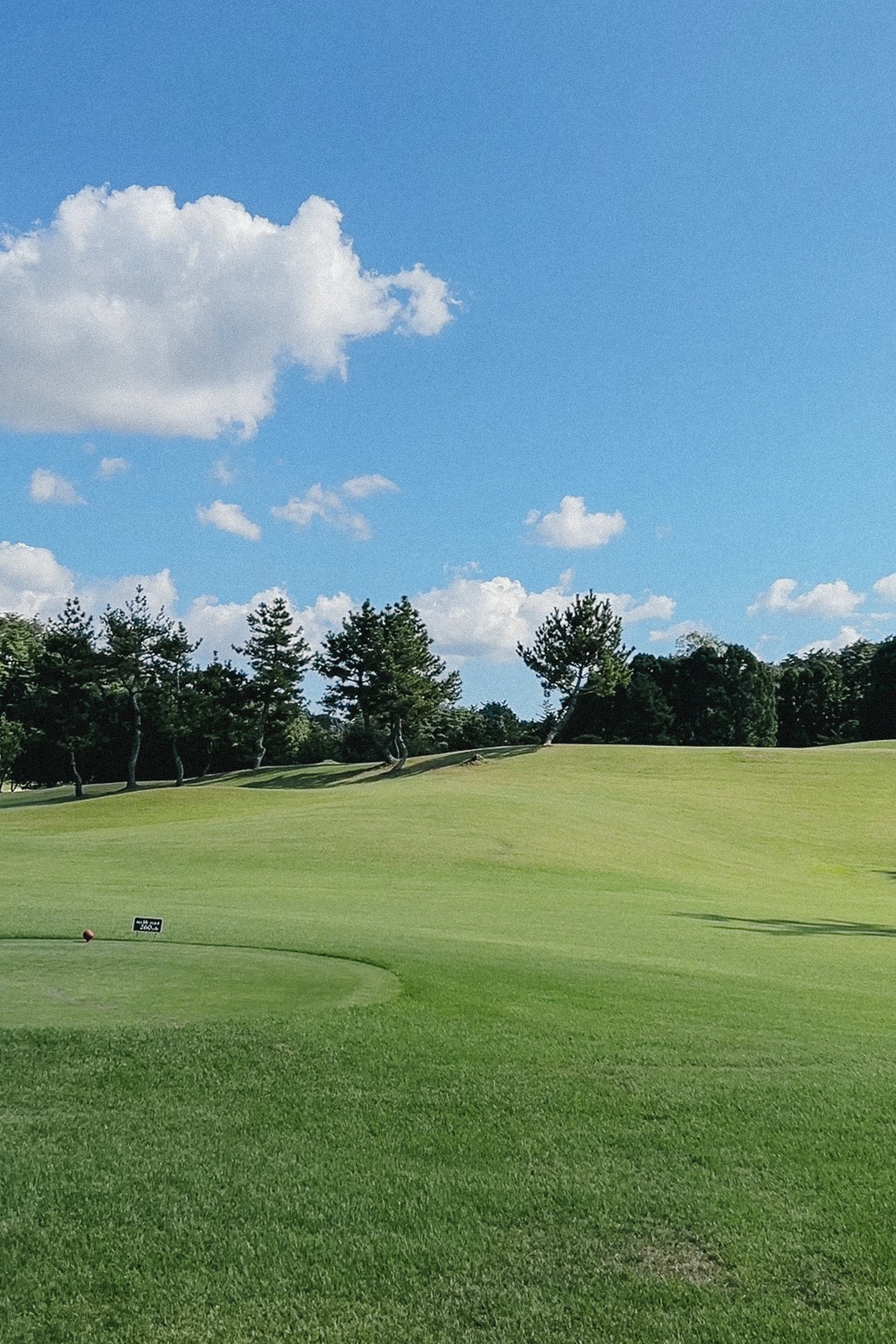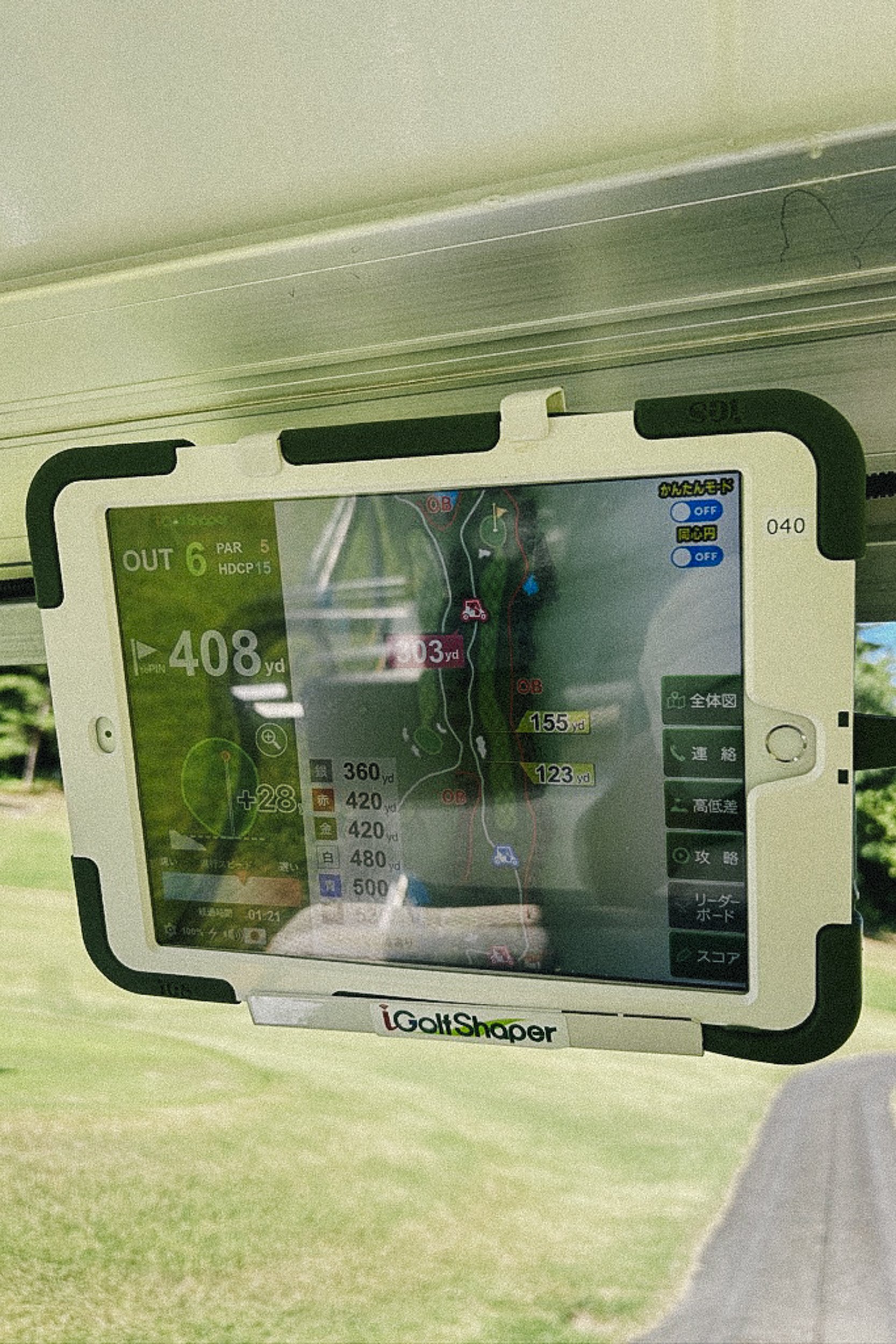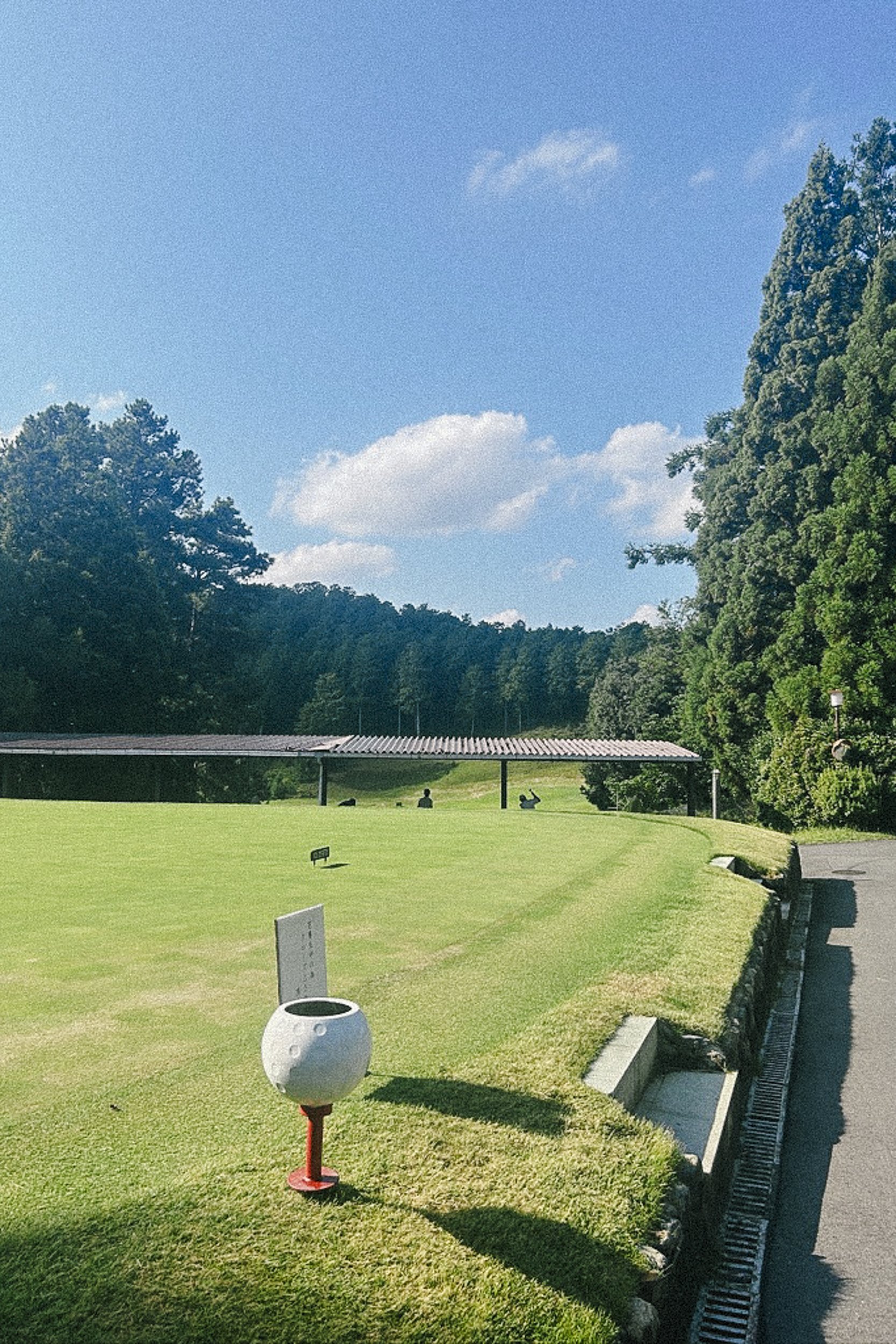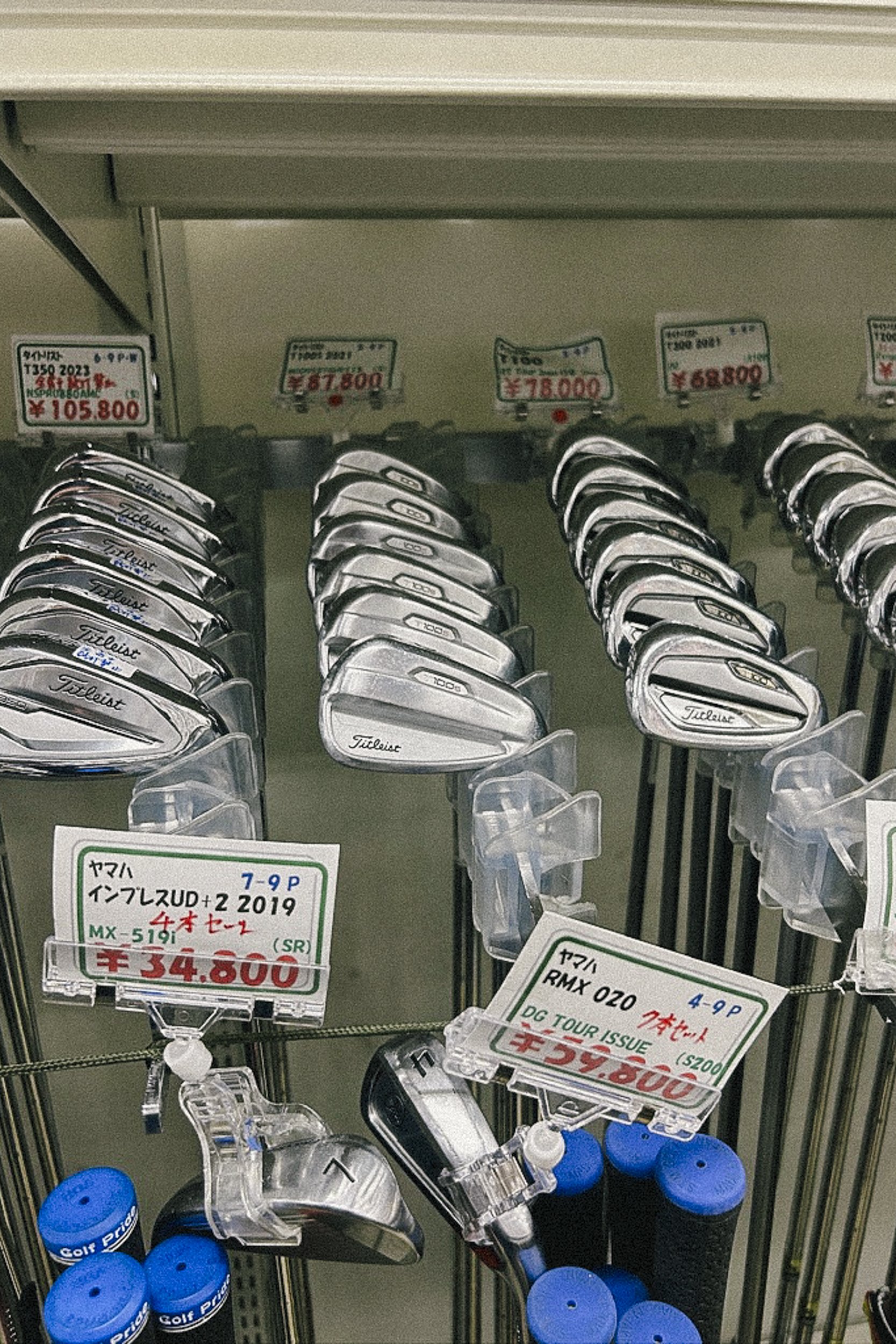Japan: TAKE ME BACK
Words and photos by Oliver
In many people’s imagination Japan is a place of two competing moods, which coexist seemingly without friction. On the one hand you are hit on arrival with the effervescent fizz of neon, noise and urban energy - the land of pachinko halls and 24hr Karaoke, where sushi is served on a conveyor belt, and crowds, driven by consumption, swell the streets of its metropolises at night. And yet it is also the land of the zen garden and the Buddhist temple; Kaiseki cuisine and the tea ceremony; deep craft traditions in clay and wood; and of particular appeal to me the most civilised approach to the humble art of bathing. The post-war economic boom that created the urban context for the former also gave Japan its modern love of Golf, which it duly approaches with the reverence it retains for the traditions of the latter. When seen through this lens, it is perhaps no surprise that a country that gave the world Nintendo and the tasting menu, will do golf with a heavenly combination of imagination and perfectionism.
As with many things in Japan, Golf comes with a specific set of customs and protocols that are idiosyncratic and kind of sensible, or at least present as logical because of the dutifulness with which they are adhered to. It is, for example, largely compulsory to stop for lunch at the turn, your 10th tee time issued as you leave the 9th green for the clubhouse and a lunch of soba noodles or tonkatsu, tempura or Omi beef. This system works in part because it is respected and no one tries to cut in. And as speed of play on the course is quick enough, this momentary pause for (delicious) refueling allows the player some space to shake off the negatives of bad front 9, or give them a moment to gather themselves for the close if they are playing well. And of course it gives the group a moment to solidify the social bond a round entails, to sit together away from the grind of the game in surroundings that offer a haven from the stress of daily life. This, in effect, is all that we play golf for: for the sport of it, for the companionship of it, and for the escape of it.
Asahino Country Club, a short trip from Kyoto in Shiga prefecture, was established in 1976 and reflects the spirit of those times in its presentation - the clubhouse built of concrete and carpet, formed in the days of the penny loafer and the double breasted blazer but now welcoming a more understated kind of glamour. It’s not flash, but not humble either. ‘On point’, my colleague Moritz would doubtless say. On arrival (your car whisked away by the valet, your clubs too) you enter a lofty, light-filled atrium and are handed your locker room key (in a leather pocket wallet) where you will wash (toothbrushing and shaving supplies provided) and change for your round. Emerging at the starter’s hut you find the four seater cart has been loaded with your group’s clubs and just ten or so minutes after leaving your car you are ready for the first tee, without ever feeling rushed or harried to be there on time. The course is manicured to a degree that a bad lie is never presented, but it demands enough concentration to recognise that careful strategy and shot selection will reward the better golfer. The cart, I should mention, is automatic, and follows you when you choose to walk, gliding along with the group and waiting for you as you leave the green. I am avowedly anti-carts, and will only ride one when forced by intense heat or social pressure. But these automatic carts allow a very satisfactory middle-ground where you can walk a hole or hitch a lift, without disturbing your partners’ rhythm. These carts are a little Jurassic Park, and their styling redolent of the decades that birthed the Japanese boom, shortly before history ‘ended’ and the Japanese economy shuddered to a halt.
Kyoto Golf Club (est. 1948) is an older and altogether tighter affair, lying as it does in just to the north of the city centre, with built up areas on all sides giving a close sense of the real world nearby. The Kamigamo course is short, 5827 yards from the back tees and a par 69, but a wonderful test with its narrow, wooded fairways and carefully positioned water hazards. Many of the holes have two greens, allowing rotation and variation in the design, and providing opportunity for maintaining what was again the lushest of playing surfaces. So pristine were the tee boxes that I had to reach down and check for sure that I wasn’t about to tee off on artificial grass. Unaccustomed as I am to exotic grasses, I felt a long way from the sandy soil of Dunbar or Kilspindie, but at home in its seductive perfection which forces a kind of accountability: this level purity ensures a bad shot can only be blamed on the golfer, not on a bad lie. In all its manicured magnificence Golf in Japan is still the same game and keeps us honest, good shot or bad.
The post-covid golf boom, whose effects we are still witnessing, is borne out of a radical reassessment of people’s time and working patterns. Clubs that were seeing the memberships dwindle in the 2010’s as older members passed on and the waning commitment of younger members, for whom time with their families at weekends is (reasonably enough) expected, were threatening the model of the local golf club. But flexible working patterns and the unavailability of opportunities to socialise indoors during lockdowns led many lapsed golfers back to the game, and encouraged just as many to take it up for the first time. Recent Golf came from exactly this scenario. But the golf boom that still lingers in the imaginations of those of us old enough to remember it is the one that Tiger inspired and Nike Golf made iconic. It coincided with the most consequential revolution in both how the game is played, with its new emphasis on speed and athleticism, and the equipment that would serve to turbo charge that revolution.
The current boom is notable for the fact that while new technology is relentlessly (and ever more expensively) marketed, the developments in club technology of the past half decade have mostly been remarkably dull. By contrast the heyday of the Tiger/Nike Golf years were full of weird and wonderful innovations, golfing equivalents to Adidas Predator, that seduced all generations and abilities of golfers. Japan was deep in its stagnant zero-growth stage at this point, but a deep culture of collecting combined with a passionate love of golf means that its second-hand golf shops are overflowing with rare finds and new discoveries. The kind of place you find treasure you did not realise you sought. Yoshiya Golf in Kyoto is just such a place. There are rows upon rows of iron sets, racks of wedges and buckets of drivers - two dozen Sim 2’s here, three dozen TSR2s there. A heaped corner of training aids gives way to a well-used hitting net where you can try before you buy. A trawl through a bucket of loose fairway wood heads turned up a Nike Vapor Speed 5 wood (the neon yellow one) for ¥2850 (€18!), which I bought at once. This club is now a favourite in my bag, a go-to option loved for its origin story as much as its performance.
I was in Japan for my day job, but made some time to dip a toe in Japanese Golf culture, and everything I discovered deepened my curiosity for how the game translates into new lands and cultures. Golf’s availability to us at all ages is a form of continuity that cuts across time, taking us to new places whilst presenting familiar challenges. And golf is a game of things and places - the objects that we play with, that make up the furniture of the game, are the histories that connect us to experiences far beyond the pursuit of performance. No other sport changes aspect so drastically according to place, wedded to the land it takes place on.























